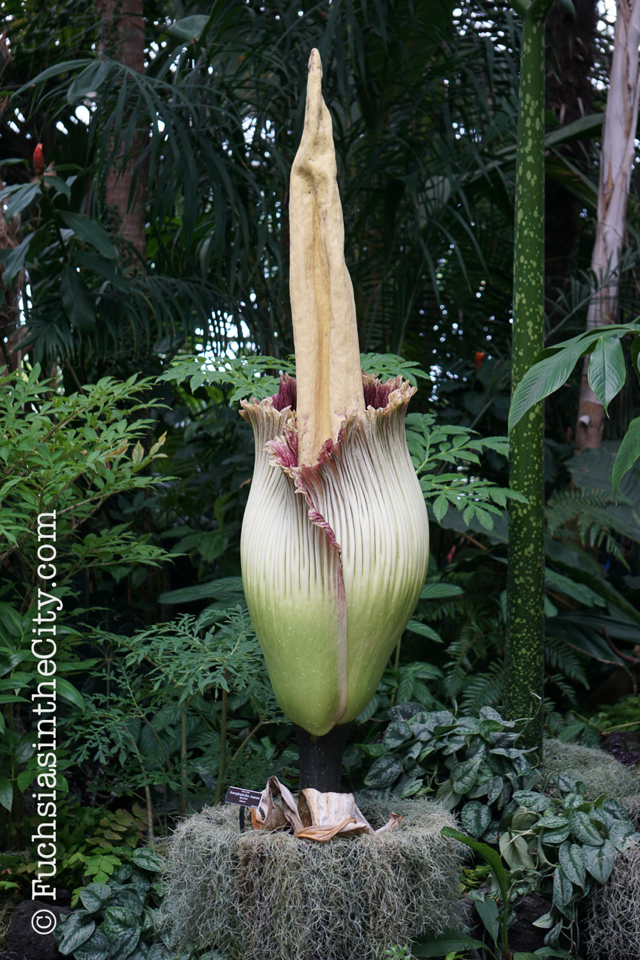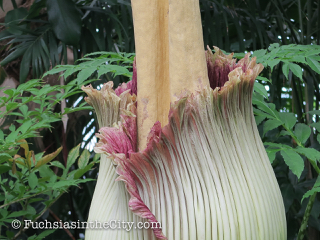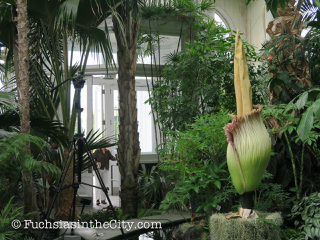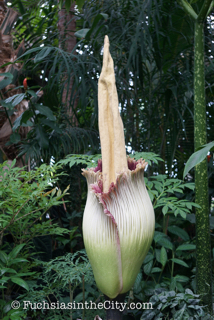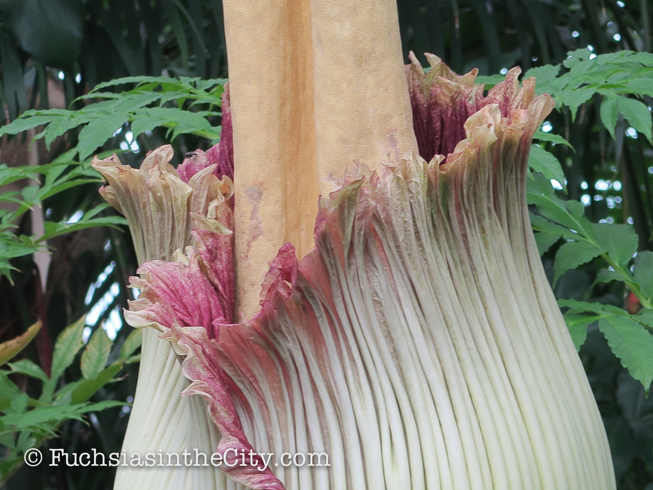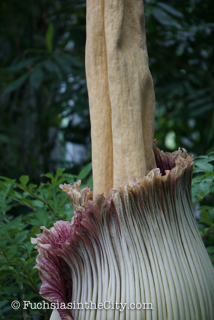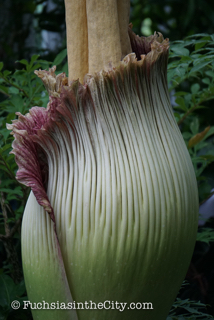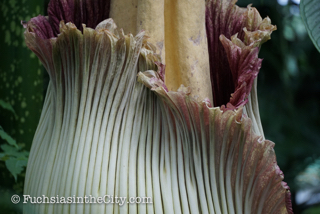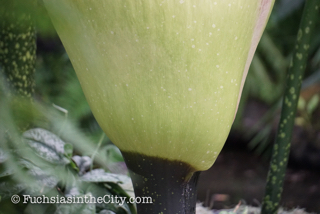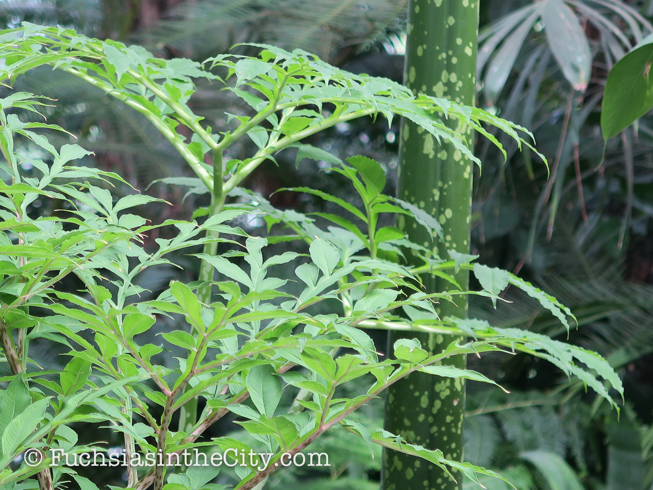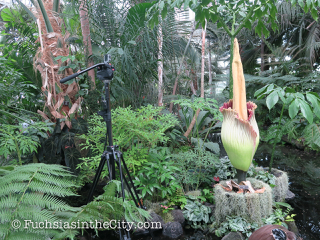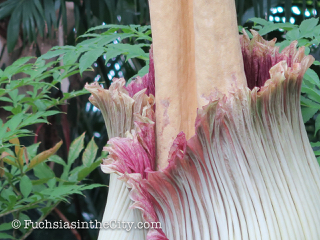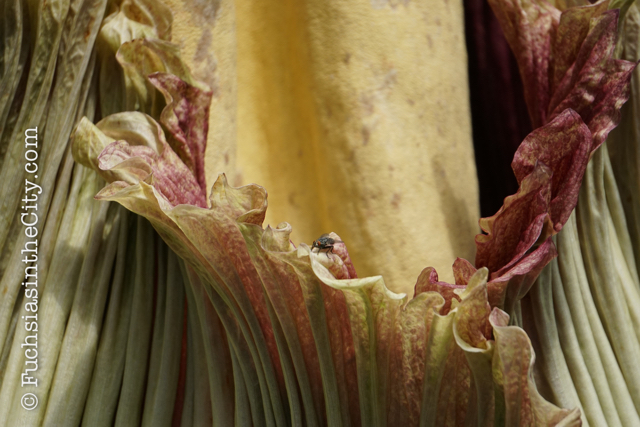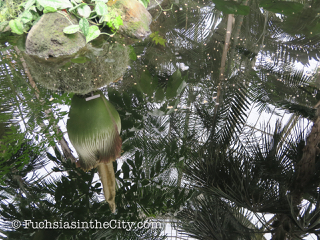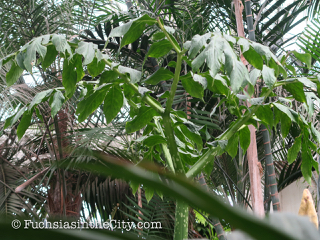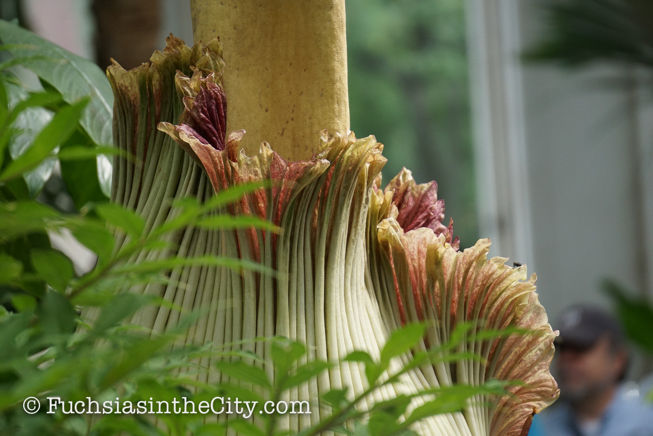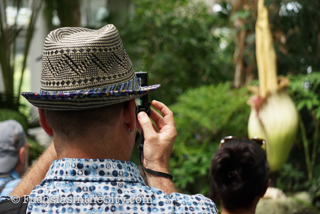The wake of the corpse flower
Sunday, July 31, 2016

The plant’s botanical name amusingly translates as “giant misshapen phallus”, a fact that’s usually mumbled over by embarassed commentators. Sir David Attenborough even invented the name “titan arum” to protect his modesty in The Private Life of Plants. It is, in fact, the largest single floral erection in the entire plant kingdom. Bar none. Not just content with that big come on, this behemoth relative of the calla lily also really stinks when it’s in bloom. Really, really stinks. It’s affectionately called the corpse flower for very good reason.
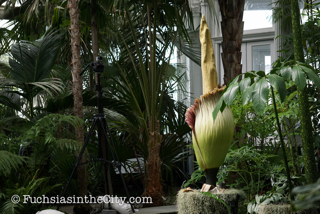
Native to the equatorial rainforests of Sumatra, Amorphophallus titanum was first described by the Italian botanist Odoardo Beccari in 1878. I doubt a British botanist would have so brazenly recognized the plant’s obvious characteristics but, in spite of its name, its first flowering in cultivation was still at the Royal Botanic Gardens at Kew in 1889.
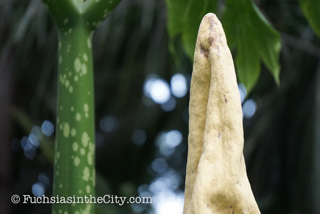
Amorphophallus titanum grows from a huge underground corm that sends up a single branched leaf on a tall mottled green stalk, a leaf that can reach up to six meters tall and five across. The leaf dies away each year and then a new one grows. Because its bloom is so huge, a corpse flower needs to bulk up through about seven to ten years of vegetative growth before it can put on its show for the first time.

For all its impressive size, flowering is quickly over. The spathe opens in the middle of the afternoon or late evening and remains open through the night, when the female flowers inside are receptive. Within about twelve hours the spathe wilts. Sometimes, it can last a little longer but that’s about it. The act’s over. Knowing time was limited I got myself to the NYBG early. And to beat the crowds. At twenty-five dollars a pop to get into the conservatory, you can also see why this wonder of the natural world has become so popular with botanical gardens in these hard-pressed times. It draws crowds. Guaranteed.
By the way, if you missed the NYBG’s flowering Amorphophallus titanum this go-round, there’s a secret surprise at the far end of the grounds, near the production greenhouses. Do check it out in the next blog…
